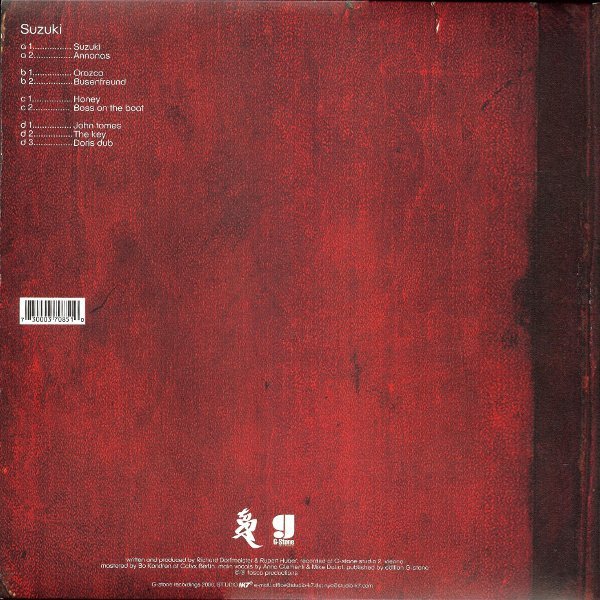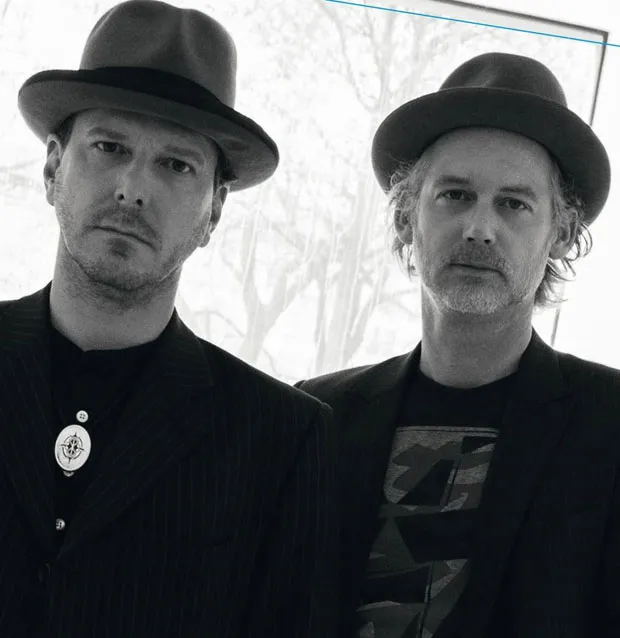
By the late 1990s, Vienna had become a quiet but potent epicentre of downtempo, trip-hop, and electronic jazz fusion. While Berlin and London were pumping out relentless techno and breakbeats, Vienna carved out a different sonic path—one steeped in lounge aesthetics, dub influences, and deep, cinematic textures. At the heart of this movement was Richard Dorfmeister, already renowned for his groundbreaking work with Kruder & Dorfmeister, whose seminal DJ-Kicks compilation had cemented their status as masters of the downtempo craft. His counterpart, Rupert Huber, came from a more classical and ambient background, specializing in spatial sound design and minimalist composition. When these two minds collided in the mid-’90s, Tosca was born—a project that would take the groove-heavy sensibilities of beat-driven electronica and infuse them with a deeper, more introspective emotional core.

By the time Suzuki dropped in 2000, Tosca had already made waves with Opera (1997), a sensual and smoky debut that established their signature style. But with Suzuki, they refined their approach, crafting an album that was more immersive, cohesive, and timeless—an odyssey into deep grooves and ethereal soundscapes that still holds up today as one of downtempo’s most influential records.
The creative process behind Suzuki wasn’t just about layering beats and textures—it was about capturing an atmosphere. Named after Shunryu Suzuki, the Japanese Zen master whose book Zen Mind, Beginner’s Mind inspired the duo, the album embodies a sense of fluidity and mindfulness. Dorfmeister and Huber didn’t rush this project; they let the music breathe, exploring textures organically, experimenting with different spaces, and allowing happy accidents to shape the final result.

Musically, Suzuki draws from a deep well of influences: dub reggae, jazz, trip-hop, ambient, and classical minimalism all find a home here. The duo invited musicians into their Vienna-based studio to contribute live elements, blending electronic programming with warm, analog instrumentation. Bassists, horn players, and vocalists subtly color the album’s DNA, ensuring that even its most electronic moments feel organic and alive.
One of the most interesting anecdotes from the sessions was their use of field recordings—random sounds from nature and the city, woven into the fabric of tracks like whispered secrets. Dorfmeister, always an advocate for dub aesthetics, insisted on running drum loops through vintage echo units to create the album’s signature spacey feel, while Huber’s compositional background ensured each track had room to evolve and breathe.

Although it’s hard to choose between tracks from Suzuki, five of them, instantly could come to mind: “Pearl,” “Annanas,” “Orozco,” “Honey,” and “The Key.” Pearl opens the album with a perfect introduction to Tosca’s world—warm basslines, ethereal vocals, and a deep sense of space that immediately pulls the listener in. It sets the mood for the entire journey. Annanas stands out as one of the most groove-driven tracks, blending a hypnotic rhythm with dub elements and jazzy brass flourishes, making it an essential cut for downtempo lovers.
Orozco is perhaps the purest representation of the duo’s dub influences, with cavernous echoes, deep bass, and an immersive sense of movement that feels like drifting through an endless soundscape. Honey brings a sensual, almost dreamlike quality to the album, with its smooth, laid-back beat and delicate vocal snippets that melt into the mix, creating a warm, enveloping atmosphere. Finally, The Key serves as a powerful closing track, encapsulating the album’s signature blend of organic textures and electronic precision. It leaves the listener in a state of deep reflection, making it the perfect send-off for an album that thrives on atmosphere and emotion. These tracks not only define Suzuki but also highlight why it remains such a timeless piece of electronic music
If you’re new to Suzuki or downtempo in general, here’s why this album deserves a spot in your collection, why? Firstly because is cinematic, immersive and atmospheric masterpiece, where every track feels like a self-contained world, yet they all connect seamlessly. Secondly, it’s a timeless production that still sounds as fresh and modern as ever and its warm, analog textures and careful attention to space make it an album you can return to repeatedly. Thirdly, it’s a perfect blend of organic & electronic that breaths, its balance between live instrumentation and electronic elements makes it feel human and intimate. And finally, because this album set a standard for downtempo production, influencing everyone from Thievery Corporation to Bonobo, and it remains one of the defining records of the genre, establishing a defining moment in Downtempo Music
Tosca’s Suzuki isn’t just a great album—it’s a landmark in electronic music history. It came at a time when downtempo was finding its voice, and Dorfmeister and Huber gave it a soul, creating a record that feels both deeply introspective and effortlessly cool.
Listening to Suzuki isn’t just about hearing music—it’s about stepping into a different headspace, where time slows, textures expand, and the world around you softens. And in an era where electronic music often feels rushed and disposable, Suzuki remains a reminder of what happens when you take the time to let the music breathe.

